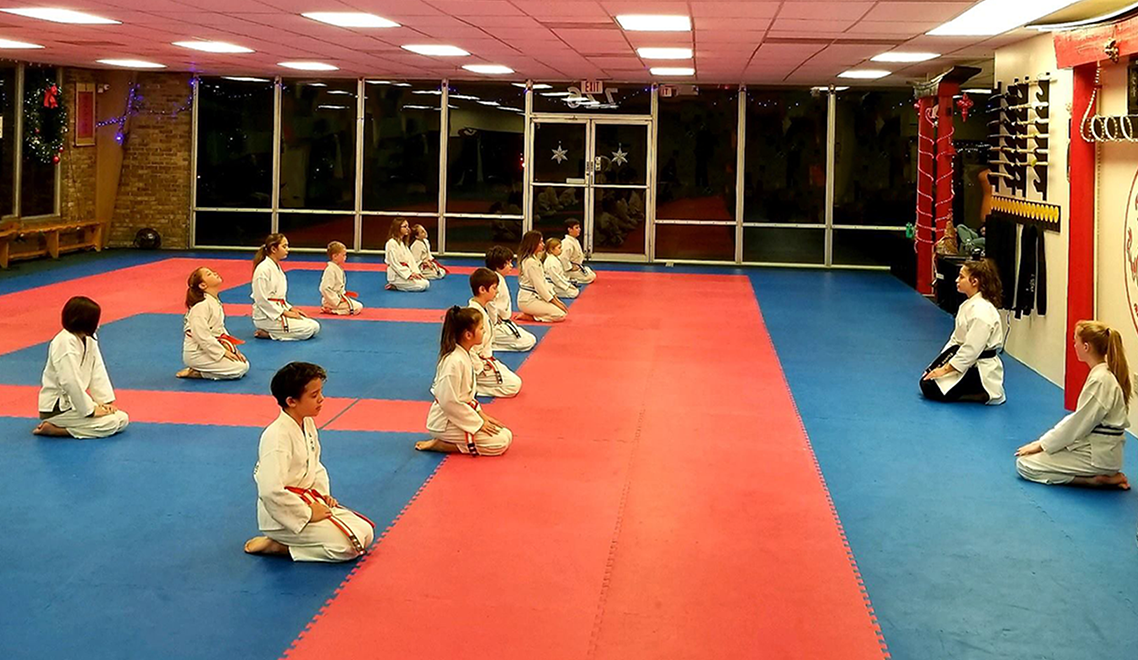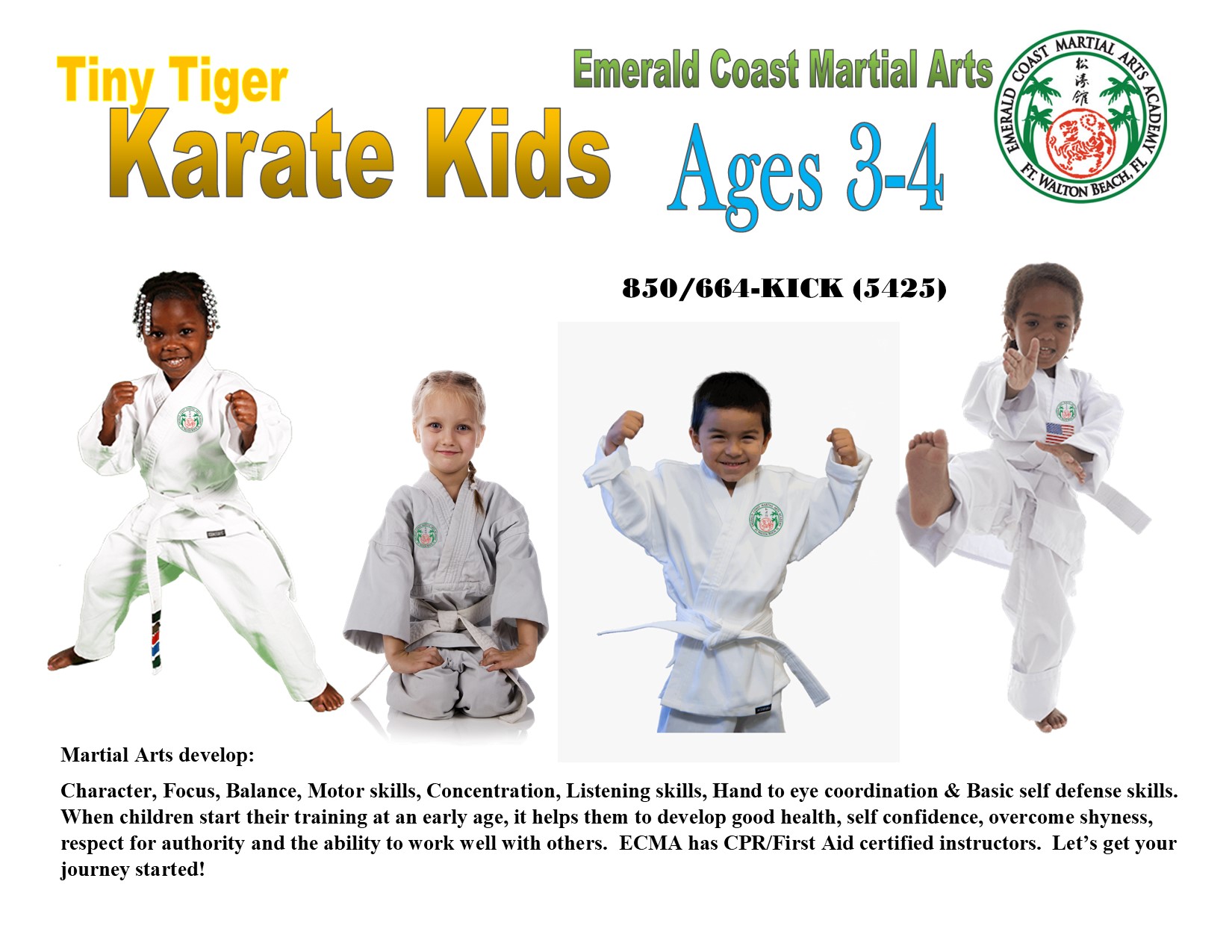Karate
Our Karate Kids
They start as early as 3 years old. Our kids learn:
- Coping skills (through challenges and achievements)
- The culture and art of Japanese Karate (language, customs, and physical tactics)
- Self protections skills against predators (taught by prior law enforcement officer, Sensei Cayer)
- Good health (through fun exercise with a purpose)
- Discipline (taught right from wrong with consequences as well as building a desire to do right)
- Unity (building up others through servitude)
- Goals (we provide a methodical approach for goals)
- Focus (we drill and target an objective to teach and enhance focus)

We offer Home School Karate on Monday & Wednesday @ 11:30 a.m.

Our kids classes work much like our military does by using a team mentality to help each individual grow. Growth is our gauge for success. We are family at ECMA.
Come join our family!
Karate For Adults
Characteristics of Shotokan training is usually divided into three parts: kihon (basics), kata (forms or patterns of moves), and kumite (sparring). Techniques in kihon and kata are characterized by deep, long stances that provide stability, enable powerful movements, and strengthen the legs.
Shotokan is regarded as a dynamic martial art as it develops anaerobic, powerful techniques as well as developing speed. Initially strength and power are demonstrated instead of slower, more flowing motions. Those who progress to brown and black belt level develop a much more fluid style that incorporates grappling, throwing and some standing joint locking techniques, which can be found even in basic kata.[6]
Kumite (fighting) techniques are practiced in the kihon and kata and developed from basic to advanced levels with an opponent.
